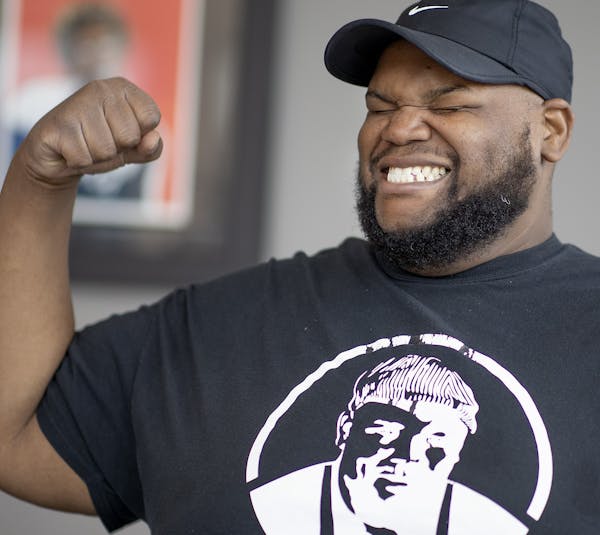As Twin Cities districts rebuild, public art has been a visible element. Arts organizations like Juxtaposition Arts, Creatives After Curfew and Public Functionary have covered boarded-up businesses with social-justice-inspired art. Permanent murals and pop-up events encourage neighbors to come out, meet each other, support businesses and help community members recognize that we are all in this together.
Projects include events like the one recently presented by Barebones Puppets, which included Masanari Kawahara performing in the Butoh tradition at the razed Arby's site on Lake Street in south Minneapolis.
In St. Paul, Midway Contemporary Art hosts public-art projects in the HmongTown Marketplace in Frogtown. There you can see Pao Her's gorgeous light boxes in the cafeteria. Farther west on University Avenue, the Creative Enterprise Zone initiative has commissioned six huge murals on buildings in the St. Anthony Park neighborhood.
These creative projects are examples of "placemaking" — an important part of preventing displacement and gentrification in neighborhoods.
"It's one of the many things we underwrite and we seek when purchasing properties," said Eddie Landenberger, a vice president and senior manager at Lank Bank Twin Cities, which helps local businesses compete with private investors and developers. "Every commercial node should have placemaking as an interest and a priority."
One of the artists in the Creative Enterprise Zone project is Reggie LeFlore. As a Black artist, LeFlore said he felt traumatized from the brutality of George Floyd's death, but also from the way Floyd's image was exploited afterward.
"I was immediately approached in the social media realm by several folks wanting me to paint George Floyd murals, and George Floyd T-shirts and hats," LeFlore said. "I really just wasn't in the right mental space for any of that stuff. It's sickening, you know, to see all of this happen so quick after the atrocity happened. And so I wanted to stay away from it."
LeFlore's mural "The Afrocentric Spectrum" outside of the Twin Cities Janitor Supply building at 2345 W. University Av. has an Afrofuturist theme, depicting a demigoddess who is reconnecting with her African roots and a storyteller character who draws on cultural forms of the Black and African diaspora.
"There's a ton of power and opportunity to really have these discussions about environments and communities through public art," LeFlore said. "One of the goals that I have with my work is to try to approach that in an ethical sense, while also understanding that there's just an absence of Black presence in a lot of these murals and a lot of these public-art pieces."
None of the murals in the 2020 CEZ Summer Mural Project directly speak to the trauma of Floyd's death, but that trauma is nevertheless present. Beatrix Jar's whimsical bird mural offers a bit of delight as a balm for troubled times. "I feel like for this mural, it was about creating something optimistic and happy," said Beatrix Jar artist Bianca Pettis. "It's sort of an opportunity to create something kind of funny and magical for people, to sort of get out of those moments of feeling really distressed about everything that's happening in the world."
Witt Siasoco's mural of a young boy of color reaching out for a plant growing amid concrete speaks to our need to reconnect to nature, even amid urban development. After all, it's easy to forget why the civil unrest happened in the first place. Like an infected wound, it required an incision in order to heal. The work that's happening now is messy and difficult, but necessary.
"Maybe the wild stuff is what we need more of," Siasoco said. "It's not just nature, it's people. The wild things that are happening on the street right now. Maybe we need to look at it differently. Just figure that it's going to grow into something beautiful, and it contributes to our city, too."
Sheila Regan is a Minneapolis-based freelance arts writer.

Gophers football coach P.J. Fleck lists 'resort-style' Edina home for $3.9 million
Mexican film wins top prize at Moscow International Film Festival while major studios boycott Russia
Why you might have heard Paul Simon's 'The Sound of Silence' at Spanish Mass

Minneapolis native Poppy Harlow parts ways with CNN

